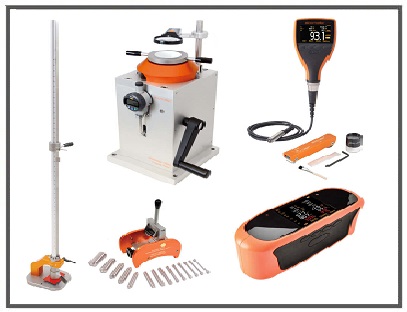

Special Powder Coating Test
Category: PowderType: Article
9/20/2021
Special
Powder Coating Test:
Powder Coating can produce an associated
film after curing, which can be tested according to the use of the costumer’s
requirements. For the most part, these tests contain a powder coating
examination.
Optical properties: characteristics that arise from the effect of
the substrate between light and the surface of coating.
PARTICLE SIZE DISTRIBUTION: Having the right powder particle
size and distribution for the application method is one of the main physical
requirements that a powder needs to meet. The particle size affects the
powder’s ability to take on the electrostatic charge, the electrostatic charge
needs to be sufficient for the powder to attach to the surface, and then the
powder needs to encourage film buildup without becoming insulating.
Impact resistance: The coating is exposed to the
deformation resulting from the rapid impact of the weight under the standard
conditions. The resistance of the coat will then be examined against cracking
and scaling.
Flexibility: This test is performed by a
piece of metal that forces the top and back of the coated surface. The test is
done or performed until the first crack becomes evident.
Other tests are performed to examine the resistance of the coated
surface against; Salt, Humidity, Atmospheric conditions and Heat.
Hardness: This contains the tests that examine the resistance of coating
against toothpick, scratching, cutting off and etc.
Determine the adhesion: Adhesion is the resistance of
the coating against the removal from the surface, which it is applied to.
GEL
TIME: The gel time of a powder coating is the length
of time it takes for a thermosetting powder to gel on a polished metal surface
at a specified temperature. It is a useful indication of curing speed and the
consistency of powder quality.
SPECIFIC GRAVITY: The specific gravity of a powder coating is
its density relative to water. Water has a specific density of 1. This is an
important measure because it helps calculate the coverage of the powder and so
the cost as a function of coverage.
Film thickness measurement: These test methods cover the
nondestructive measurement of the dry film thickness of nonmagnetic coating,
which is applied over a ferrous base material using a commercially available
test instrument. We can measure the thickness of the film by thickness gages.
The Solvent Rub Test: This test method is used to measure the degree
of cure of a coating. Making sure your coating is fully cured is super
important – it simply won’t perform if it’s not! It’s done by checking the
degree of resistance the cured film demonstrates to a solvent.
Tags:
Flexibility Hardness